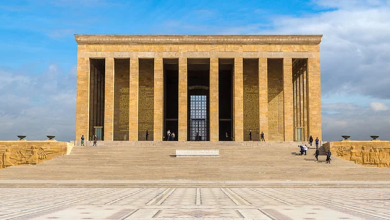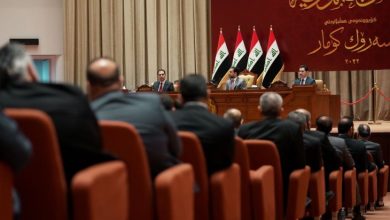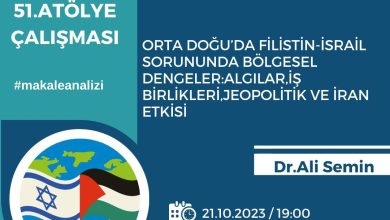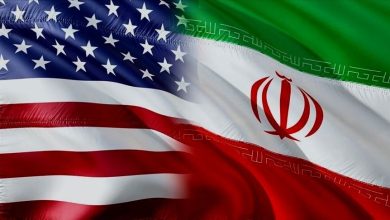The Plight of Woman in The Syrian Civil War
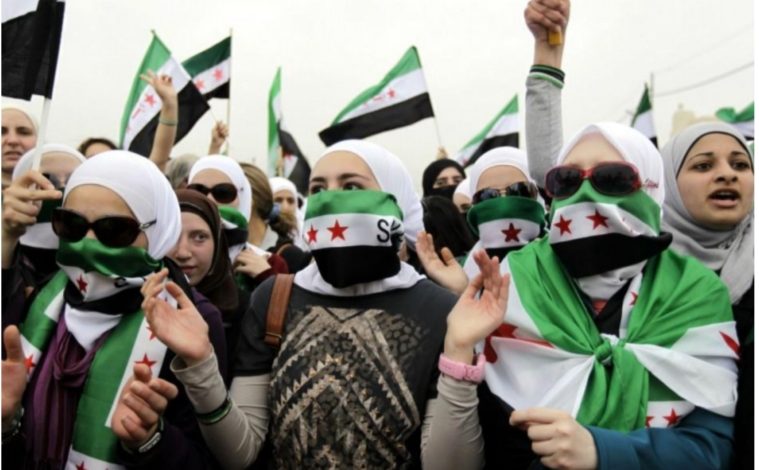
ABSTRACT
In this paper, I tried to explain the active role of women in the civil war in Syria and its place in the conflict situation and the stages in solving the problem and ensuring peace with the information I learned from the Conflict Analysis and Resolution course with the feminist point of view. In this study, I tried to reflect the tree model and map model that I learned from the course of Conflict Analysis and Resolution. The way I followed in doing this paper first explained the historical process and varieties of feminism. I then interpreted the element of peace and violence from a feminist point of view and then briefly talked about the Syrian Civil War and the auxiliary elements in women’s active role, how it can be active and how it was active for a certain period of time. I talked about how the direct and structural violence that happens on women occurs when women perform conflict resolution compared to men.
ÖZ
Bu ödevdeki amacım ortaya cıkan feminist bakış açısı ile suriyede olan iç
savaştaki kadının aktif rolünü ve catışma durumundaki yeri ve sorunu
çözmesindeki ve barış ortamını sağlamasındaki safhaları çatışma analizi ve çözümlemeleri dersinden öğrendiğim bilgilerle aktarmaya çalıştım. Bu çalışmada çatışma analizi ve cözümlemeleri dersinden öğrendiğim ağaç modelini ve harita modelini yansıtmaya çalıştım. Bu ödevi yaparken izlediğim yol ilk olarak feminizmin tarihsel sürecini ve çeşitlerini açıkladım. Sonra barış ve şiddet unsurunu feminist bakış açısı ile yorumlayıp daha sonra suriye iç savaşını kısaca bahsedip kadının aktif rolu üoynamasındaki yardımcı elementler, nasıl aktifleşebileceği ve belirli bir süre aktif olduğunu anlattım. Kadınların çatışma çözümünü erkeklere oranla nasıl gerçekleştirdiği kadınların üzerinde olan doğrudan ve yapısal şiddetin nasıl oluştuğundan bahsettim.
- 1. FEMINIST PERSPECTIVE AND HISTORICAL PROCES
Feminism is a social phenomenon. Generally known perspective is the knowledge of equility between women and men. A single and fixed definition of feminism or this theory cannot be made such as the historical processes of feminism or feminist theory movement that evolved in the historical proses some different perspectives have also been put forward about how the occured. The phenomenon of feminism appears in different processes. Theese processes are I. Feminist wave, II. Feminist wave, and III. Feminist wave. These three waves of feminism are usually from 19. century and 21. century. İt involves a process up the century. During these periods, women were influenced by different understandings, different theories and ideologies, and this influence indirectly or directly affected the actions they carried out in line with their demands or goals in the context of women’s rights.
1.a-) I. Feminist Wave
This movement is based on Vindication of the Rights on Women written by Wollstonecraft in century. The movement, called the first wave of feminism, was closely related to the movements on universal suffrage for women that emerged in the 1840s and 1850s. In generally, these demands included women’s suffrage, equal opportunity in education, and women’s property rights. These demands were fundamental rights according to the terms of the period. In particular, feminist group, felt that women and women’s rights were not adequately addressed in the American Decleration of Independence, the French Decleration of Human Rights and the works of theorists who developed the doctorine of Natural Rights, pushed to make a number of demands in social and political spheres.
The most important result based on first wave feminism is resistance to the patriarchal social structure, social status of the so called “ Sexual Revolution ” movement, the role and mental structure of the areas of influence, to create change in the basis of the understanding and to provide a reactionary form. 19s feminists, the prejudices of the dominant white men and their own state and more they were exploring, “ and after this period, feminists from different social, political, ekonomic, legal demands, male-female, public and private spaces in the way of having more free and egalitarian rights are engaged in the struggle.- 1.b-) II. Feminist Wave
Developments in the west in 1960s have also directly affected women. In particular, it was during this period that technological advances were inroduced that enable women to give birth safely. This technological or manufactured of women had difficulties in accessing and using alternative methods. - 1.c-) III. Feminist Wave
- III. feminist wave in early 1990s II. feminist wave was born as a reacting to the practices of feminism and the inaccuracies in perepcions. This reaction was often the wiew of feminism reducting only to upper, middle class white women, and women it was intended to spread its movements in a wide plane. III. women in wave feminism intellectual preceptions of them, II. involved in the thoughts of women of wave feminism by rejecting the perception of a uniform universal femininity, they emphasize that women’s problems are not just the problems of white women, but that women should be dealt with individually on the universal plane. Third wave feminists were more interested in micro polities such as violence against women, sexuality, women’s empowerment.
- 2. TYPES OF FEMINIST THEORY
Feminist theory is quite diverse. Traditionaly, original forms of liberal, socialist marxist, and radical feminism are defined.
2.a-) Liberal feminism reflects a commitment to individualism and bicameral equality, while at the same time being characterized by a demand for equal rights and opportunuties in public and political life.
2.b-) Socialist feminism draws attention to the economic importance of women being confined to family or home life, illumunating the relationship between women’s nationality and capitalist mode of production.
2.c-) Radical feminism point out that the personal is political. In other words, they want a radical, even revolutionary, restructuring of home life and family life, while seeking to move beyond the perspective of local political traditions.- 3. SECURİTY AND SECURİTY DİSCUSSİONS
When we consider security, which is the basic concept of international relations, with the eveluation of different approaches, we see the following table;
Table 1 : extended security concept
| Security concepts | Shown (Whose safety) | Value at risk (Safety of what) | Source of threat (From whom) |
| National security (Politic, military) | State | Sovereignty Territorial size | Other states Terorism |
| Social Security | Nations, group of society | National utulity, identity | Nations, foreign cultures, immigrant |
| Enviromental security | Ekosystem | Sustainability | Humanity |
| Sexual security | Relation of sexual, local cominity, solidarity | Equality, identity | Patriarchy, totolitarian \ masculine instutions (goverment, religions,elites,cultures) |
The most important contribution of feminist theory to the field of security is the eveluation of the concept of “ gender security ”. Feminist theory has criticized the exclusion of women in both practice and theory of international relations, stating that there is no place within the state that is more sexualized in the distribution of power than in the structure of security (Terriff, 1999: 91). Feminists using the concept of “gender” (Peterson and Runyan, 1999: 5) with the emphasis on the determinacy of social learned behaviors in the distinction of femininity and masculinity have pointed out that sexual identities are constructed by society.
The transaction to a common sense of security, including individual and social security, rather than definations that centralize the state and reduce the understanding of security to the military basis, is one of the suggestion of feminist theory (Peterson, 1992: 31). Cynthia Enloe, with one important determination, on what security actually protects must have questioned it. Enloe, your security is actually more male dominant than state dominant he opposed this concept by stating that it maintained order. (Enloe, 1989: 31).
The treatment of the states as the main actor, as well as the opposition to the hegomony of the male specific point of view in security literature, formed another fundamental point of feminist theory (Ann J. Tickner 1992: 28) states that while adressing gender emphasis in both safety and economic and enviromental security, women are rarely noticed in safety literature. Even so, the role of women in security is uncertain: “while the state and its men protect and define security, women have little control in the circumstances of maintaining security” (Tickner, 1992: 30). Feminist international relations their contribution to security from a gender perspective should be considered, along with other conceptual discussions, as well as their steps towards equating the role of the woman with that of the man in practice.
Along with Feminist perspective on international relations, she has addressed women’s security not only in direct violence, but in addition to it, and in more structural violence. Cynthia Weber drew attention to the problematic areas in the definitions from the beginning and emphasized the levels of discrimination that legitimize all forms of violence and the male-dominated structure of controls. According to him (Weber, 2001: 86), the realist concepts of power and security that apply in the realist state are patriarchal structures that eliminate women and give men the upper hand. Rather, it is very difficult to detect indirect violence and to obtain certain techniques to prevent it, as opposed to being able to easily detect the physical effects of direct violence. As can be seen in this study, especially in cases such as war, these forms of violence intertwine and feed on each other.
Johan Galtung, who is credited with Peace Studies, described peace under two categories as “positive peace” and “negative peace” (Galtung, 1996). Negative peace, for example, refers to the lack of violence that takes place immediately after the ceasefire. Positive peace, on the other hand, involves the restoration of relations, the creation of social systems that serve the needs of the whole population, and the constructive resolution of conflict. Peace does not only mean that there is no conflict, but also that there is no violence in all its forms. Therefore, peace can be achieved in the atmosphere in which people interact in a non-violent way and manage their conflict in a positive way. Unlike “absence of conflict”, which reflects a negative understanding of peace in the definition of security, feminists present an example of a system where there is no structural violence, with the concept of positive peace, which they evaluate in terms of a process, not an outcome. According to Tickner (1992: 128), “real security means both the absence of war and the elimination of unjust social relations, especially unjust gender relations.” In other words Peace, national and in the international arena, war, violence and hostilities in a society where the absence of social and economic justice, equality, human rights and fundamental freedoms is guaranteed (Shepherd, 2009:208). In a society where women have equal rights and freedoms with men in all fields, where the balance of social justice, economic equality and cooperation, equality of opportunity can be mentioned.
Especially in feminist theory it is important to highlight the knowledge and ideas that support women’s peace and cooperation in decision-making mechanisms, as in the rational actor model, and to support them in a more rational way (Reardon, 1993: 19-20). However, even if this participation is necessary, unfortunately, it may not be enough. In feminist theory, Mary is featured with bruguieres men due to the aggression of Peace Studies, war, women, due to their nature peaceful and nurturing towards peace and stereotypical beliefs of feminists developed three approaches emphasized (1990: 3 – 9): in this Pattern two to accept, reject gender distinctions, a plate or two on the basis of the criticisms of militarism, refusing to develop a perspective. Feminist Studies object to the discourse that women are inherently linked to peace, and oppose discourses that argue that women’s participation, support and inspiration in war are balanced by the identification of women’s identity with peace (Blanchard, 2003: 1290). Women may not always be willing to be peaceful. What is important here is the effort to institutionalize the channels and structures needed to achieve lasting peace against militarism and military industry, unlike gender stereotypes.
Through the dissemination and assistance of Feminist theory, structural violence which has elements that may threaten security can be easily identified by women’s experiences such as gender discrimination in the field of work, exclusion of women from political and cultural spheres, pornography, problems women experience in accessing education and health services, and security can be reinforced by measures that can be taken in advance This is only possible by the evaluation of women as equal participants in the construction of security. From this framework, feminist international relations could lead to discussions of security, violence and peace in the conflict in Syria and the establishment of lasting peace in Syria.
- SYRIAN CIVIL WAR AND WOMAN’S PLACE
After the burning of Mohammed Buazizi in Tunisia on December 17, 2010, riots based on freedom and rights spread across the Arab world and the so-called “Arab Spring” began. This process soon turned into internal warfare in Syria as security forces responded violently to anti-Bashar al-Assad demonstrations in Syria. The violence has continued to the present day with the formation of civil armies within the people, the deployment of ISIS in the region, the participation of different states in the war, the use of chemical weapons by the regime. Since March 15, 2011, about 11 million people have sought security in Syria, while 3.3 million have been internally displaced persons (IDP/internally displaced persons) and 5 million have been forced to seek refuge in neighboring countries and beyond (Maurer, 2017). Today, the number of registered Syrian refugees exceeds 5 million, of which 48.5% (of which about 23% are in the 18-59 age range) are women (UNHCR, 2017). - When the Arab uprisings first began, women in Syria, Egypt, Libya, Yemen, Iraq and Tunisia actively participated in the revolution, fighting for their political demands in the areas. These uprisings have shaken the ground for dictators while changing the nature of power discourse between the state and the people, but have left everyone facing “uncertainty” (Brynen, 2012:2).
- In this period, women in Syria were at the forefront of the conflict, but their voices were exhausted and unable to stand out in all the negative situations, and women involuntarily depleted the resources they put forward to protect themselves and their communities. The structural violence against women, which was inherited as a value from the past, and also as a gift, did not respond as expected or above their expectations with the formation of the state of women in total destruction. The fact that women are victimized by the means of claiming rights points to the existence of an important system problem behind their inability to make their voices heard, which is growing and feeding inequality by entering. While violence against women takes place directly from time to time, the importance of an indirect structural violence from the past that has spread throughout the whole process should be emphasized in the internal war process in Syria. Together with unequal structure and overwhelming power relationships, women struggle to exist in a systematic structural violence in this geography long before the uprisings. Gender discrimination in the field of business, the limitation of participation in the political field, pornography, inequality in the use of the most basic services of the state such as education, health, security, political, economic, legal and cultural discrimination are examples of struggles in structural violence. The structural violence that has permeated the social fabric with the riots has been added to the direct violence this time, making it an instrument of physical intervention. As a result of the conflict in Syria, women have faced and continue to face many challenges, from arrest to loss of relatives, from physical and economic hardship to gender-based violence. Long before violent clashes began, women in Syria were disproportionately subjected to violence and silenced in both public and private (IRC, 2014). This is due to the patriarchal gender-based formation of social relationships, which women consider inferior to men. Moreover, this situation has been supported for years by the state-run gender-discriminatory structure. “For years, systematic discrimination against women, law and practice has left Syrian women in a weak and negative position, ” said Leyla Alodaat, a lawyer working in the field of human rights in Syria. Women often live in a culture that neglects their physical and psychosocial well-being” (Alodaat, 2014: 15). This oppressive culture lacks the tools to combat the challenges they face as they confine women in Syria to traditional patterns. In the words of Tahani sa’di, Programme Coordinator of Arab Women Organisation, “culturally, Syrian women are raised to take care of the house, prepare dinner, clean the house, raise children… Many women think that working outside the home can tarnish their position [their reputation]” (Simmons, 2017).
- According to a UN report titled Woman Alone-the Fight for Survival by Syrian Refugee Women, Syrian refugee women struggle to put an end to unusual and sometimes hostile environments. Many face double trauma: the pain of loss or living alone in exile that accompanies separation from their families” (UNHCR, 2014b: 68). Although it can be said that those who leave are more hopeful than those who remain, it is a common struggle for humanity and honor that is experienced in both. The current gender inequalities continue to put women who back poverty, crisis, at greater risk of violence, exploitation, trade, premature and forced marriage. Syrian women also face disproportionate violence in refugee camps where they arrive across countries and international borders (UN Women, 2013; WILPF, 2016). When the status of women is assessed, it can easily be seen that six years of conflict have changed structures within the family, with female-centered households on the rise.
- The Syrian Civil War includes patriarchy, totalitarian/erect institutions (governments,breligions, elites, culture) and intolerance, which feminist theory lists as sources of threat. The structural violence that existed before the conflicts, the patriarchal culture, the destruction and the social oppression and the separation have been reinforced through gender, women are stuck between their positions before the conflicts and the current conditions, and they are left with indirect and direct violence every day.
- 5. SYRIAN WOMEN AND PEACE INITIATIVES
- In response to all the negativity of war and destruction, Syrian women offer examples of inspiring resilience and determination as leaders in their communities to play important roles in humanitarian aid, peace building and conflict resolution. The solution of feminist theory to the emphasis that knowledge production processes otherize women’s experiences is first to make women visible, and it is emphasized that objectively presented value judgments reflect male experiences and exclude female experiences (Gilligan, 1984: 15). The international assistance that was carried out both to reflect women’s experiences and to ensure that the end of the war and the process could be managed as accurately as possible for women at this stage is promising. For example, the participation of Syrian women in the various layers that allow “Woman Enough” campaign, UN Women turned into a conference with the participation of the situation in Syria and in the region to tackle the effects of the crisis 70 delegations, UN agencies, civil society, development organisations, government and ministers have met representatives of (UN Women, 2017). The protest, launched and disseminated via social media, aimed to raise the public profile of Syrian women activists involved in formal and informal peace processes and to influence the collective debate over the right and added value of Syrian women to participate in ongoing peace talks. The goal is to encourage international stakeholders to recognize the role of women in peace-building and to invite Syrian women into peace-building. In the words of Mohammed Naciri, regional administrator of UN Women Arab states: “We work within refugee and host communities and support the UN system’s response to the humanitarian crisis. UN Women also works to promote women’s participation in the peace process and to make their voices heard. TODAY, Syrian women choose to send the message that peace is possible for Syria” (UNWomen, 2017). Naciri’s words support the importance of women for peace in the light of feminist international relations and the emphasis on the publicization of the voice of women.
- Another initiative for Syria is under the umbrella of the UN, aimed at women staying in Syria within the framework of the UN Development Programme (UNDP). The Tartus region was relatively peaceful during the civil war in Syria, not directly affected by major armed conflicts. However, conditions began to change with the entry of those fleeing from other parts of the country into the region. Women and children often accounted for a large percentage of those fleeing the lack of security and worsening life conditions. Social services have been weakened and health care and repair capacity in asylum and shelter homes has been restricted as governor’s aid has been inadequate as a result of the ongoing influx of people. As a result, water pipes were degraded, large amounts of waste and water swamps were formed in the shelters, resulting in the spread of diseases, insects and rodents. With UNDP’s contribution, an initiative was launched to provide women in Tartus with employment in the plumbing field, providing tool kits and on-the-job training for repair of damaged pipes or other installations, and providing women with job and income assurance. (UNDP, 2016). The words of Aisha, who built a second room in her shelter for herself and her husband with the money she earned working on this project in a small area, although it affected a small number of women, are remarkable: “Syrian women are strong and can work in all areas, there are no jobs for men” (UNDP, 2016). With the inspiration of this project, a larger program supported the repair of 1324 businesses and agricultural inputs in 6 provinces in Syria, and the businesses were revived (UNDP, 2016). This example of how the social pressure that exists against women’s work is increasingly overcome is striking in that women feel their power by
- revealing their own potential.
- This should be addressed by an excerpt from the testimony of Marianne Gasser, head of the Red Cross Syrian delagation, which shows the devastation of war on a woman, describing the impact of aid even if it is not enough. Gasser said: “a young Syrian woman we helped was on the verge of giving birth, but she had lost consciousness for the past four days, smiling. I thought he was happy we brought him help, and I was wrong. He approached me and whispered: “Do you know what you’re doing, people coming here from outside? By speaking to us, by remembering us, you have given us one thing again: our honor. I thank you.”(Gasser, 2016).
- In order to achieve positive peace, it is important to move to negative peace first, and to ensure an end to war and violence. In February 2016, the UN Advisory Committee on women in Syria was formed to move towards a political solution to end the Syrian internal war and to include women in this process. The board is composed of 12 Syrian women of different political, religious and professional backgrounds who will counsel the UN peace envoy in peace talks. UNWomen considered this attempt a historic moment (Alfred and Mohamed, 2016). However, although the board is received positively, it does not have a formal advisory role, but rather meets when its recommendations are requested. Beyond limiting women to the “peace building” mission emphasized by Feminist international relations, in fact, even though women exhibit a presence in this formation, its functionalization is unfortunately not achieved. For example, it is not yet known how much consultation will be given to this board in stalled peace talks, and it is not bound by a rule. Moreover, the position of women in the sense of political influence complicates the problem further. A photo of the meeting attended by U.S., European and Middle East foreign ministers to discuss the Syrian refugee crisis in Paris in 2015 outlines the situation. There are many political leaders in the room, they sit at the table but there are no women sitting at the table because there is not a female foreign minister in any of these countries. However, as feminist International Relations point out, it is essential to develop women’s roles in meetings to ensure and maintain long-term peace in Syria, and to ensure that women can have a say in shaping their future and the future of their countries by being included in peace talks. The informal inclusion of the Syrian women’s Advisory Board in the UN delegation is not enough, women need to sit at the table and speak equally, and women’s roles as equal citizens in Syria’s future should be recognised and increased.
- In order to stop the conflict in Syria, to ensure peace and the building of a new society together, and to ensure the security of those who remain in the country or go elsewhere in a short time, it is obvious that women also need to be active in the process. When we look at international initiatives, it can be said that important steps have been taken for women to make their voices heard and to address their existing problems. Until now, however, women’s participation has not been realized in the political settlement processes. As many women’s rights advocates in Syria put it, “peace building is a process that begins with a sudden ceasefire and extensive talks to find a political solution, resulting in justice and equal rights for all citizens” (Badael Foundation and Kvinna till Kvinna, 2015). Women in Syria should be able to participate in and influence peace talks beyond ostensible platforms. If Syrian women are not comprehensively and effectively involved in peace-building processes, peace in Syria will not be achieved in real terms, nor will it be sustained even if it is achieved (GAPS, 2016). Creating ostensible grounds where women are not active makes it more difficult to achieve lasting peace, making the internal war process inextricable.
In my opinion, the main approaches to preventing this conflict are as follows;
In every society, especially in economically or politically backward societies, the society
should be made aware of the equality of the male and female individuals.
Leading female individuals in the spread and proliferation of some international
organization groups ( such as UN Women).
Increasing the support and common sense platforms in this regard.
The formation of incentive and educational platforms for women to take their individual economic freedom into their hands.
Increasing areas of employment for female individuals.
The formation of scholarships and education funds for girls for the development of the next generation i.e. the generation of women.
Promoting women’s initiative into the political sphere.
To ensure equality in the numbers of female and male individuals in the decision-making institution in a possible conflict in domestic and foreign politics.
Facilitating the integration of refugee women into society.
To raise awareness about birth control so that female individuals lose their housewife identity.
- 6. RESULT
Feminist international relations, primarily through the discussion of the invisibility and exclusion of women, has ensured the acceptance of women’s presence in international relations. Secondly, it has defined security from the beginning by providing an important framework for understanding and understanding current problems for the concepts of international relations. They have questioned the causes of insecurity by addressing the sexist structures of the state, with a definition of security rising over individuals as opposed to the security of the state alone. In addition, she has worked to increase the visibility of women excluded from the higher policy sphere and to question and end the sexist segregation in the field.
The end of the conflict in Syria, lasting peace and positive peace is very difficult and requires a long time, although the introduction of the process, women today are creating the future society to be effective in their troubles, even though a voice can be seen in the beginning of the international initiatives is insufficient. On the other hand, the experience experienced in Syria, where structural violence has already been committed to the social fabric, has led women to acquire new social roles, to increase their awareness and education levels and, most importantly, to become aware of their powers. After the establishment of peace, it may not be too wrong to predict that women will pursue social equality through their experiences. The irreversibility of women’s change in social roles can be a guarantor of lasting peace and continuity.
Mustafa YAĞCI
